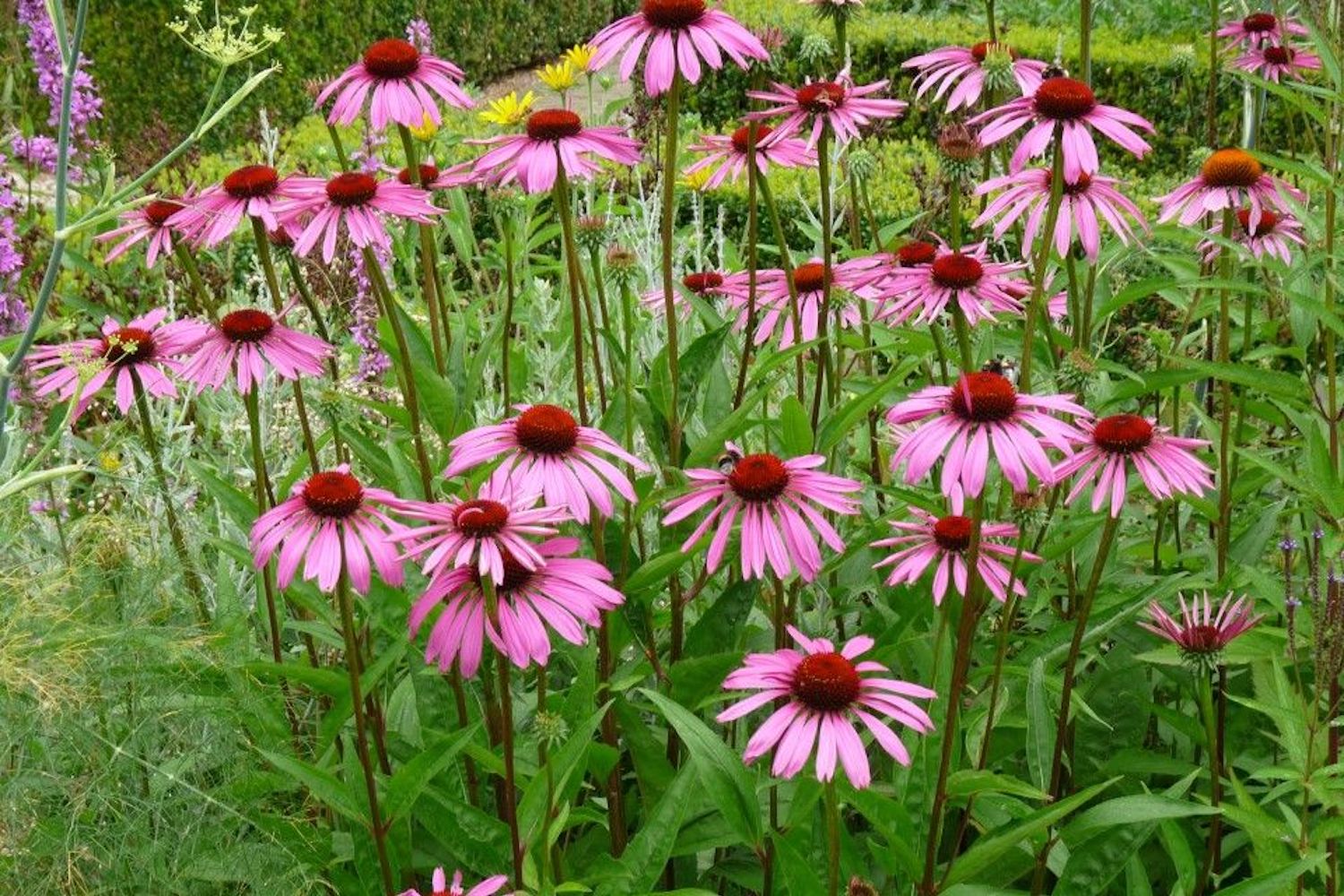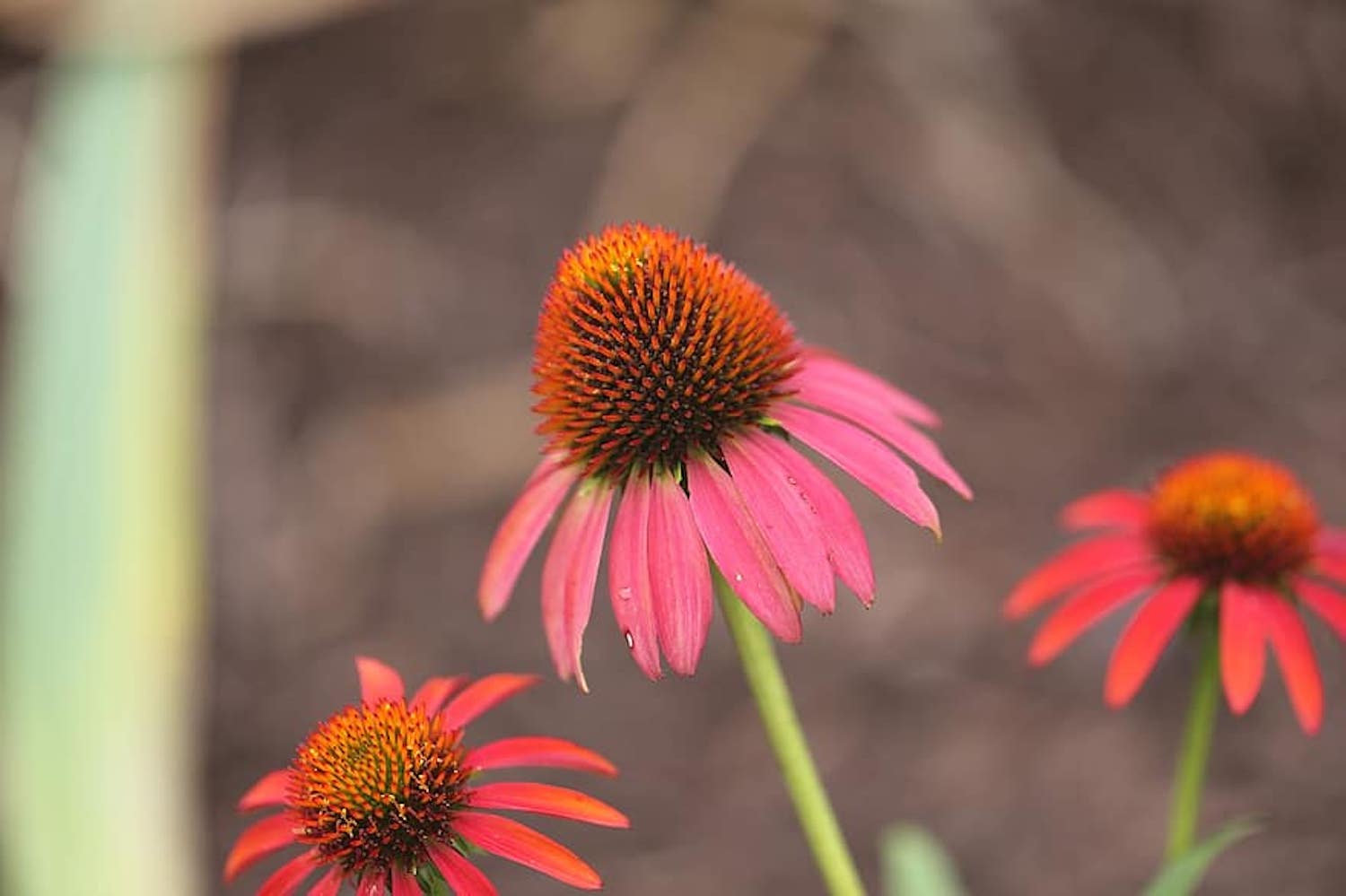Echinacea purpurea 'Rubinstern'
Approx. 0.5 litre pot
About this cultivar:
Echinacea purpurea 'Rubinstern' features daisy-like coneflowers with reddy purple pinky petals and large, pin cushion-like, dark bronze-brown central cones. Name translate as 'Ruby Star' and it is like 'Magnus' but redder in flower. A 2000 introduction from Jelitto, makes a great cut flower. Like almost all Echinacea in the British Isles does not like winter wet!
- Position: Full shade, partial shade
- Soil: Almost any soil (but does not like winter wet)
- Flowers: July, August, September
- Other features: -
- Hardiness: H5 - Hardy in most places throughout the UK even in severe winters (-15 to -10°C), Fully hardy
- Habit: Clump forming, bushy
- Foliage: Deciduous
- Height: 60 - 90 cm (2 - 3 ft)
- Spread: 45 - 75 cm (1.5 - 2.5 ft)
- Time to full growth: 2 to 5 years
- Plant type: Herbaceous Perennial
- Colour: Green, pink, red
- Goes well with: Aster, Buddleia, Coreopsis, Eucomis, Euphorbia, Geranium, Iris, Kniphofia, Monarda, Phlox, and Salvia
About this genus:
Echinacea is a genus of nine species of herbaceous flowering plants in the daisy family (Asteraceae). The generic name is derived from the Greek word echino, meaning "sea urchin," due to the spiny central disk. The common name is "coneflower". This American native doesn't help with cold symptons! According to Wallace Sampson, MD, its modern day use as a treatment for the common cold began when a Swiss herbal supplement maker was "erroneously told" that echinacea was used for cold prevention by Native American tribes who lived in the area of South Dakota!
The books will say that two things that Echinacea plants do not like are heavy clay soils and poor winter drainage; and you know what? they are right for a change! We have had trouble growing most of them here in our wet clay garden at Ballyrobert - and we have tried many many cultivars over the years. That just leaves us with only a few cultivars which we grow and are confident enough to sell ( see photos if you don't believe us!). These few cultivars we sell (not Echinaceas in general!) should be ok almost anywhere that isn't a pond or in full shade. You can thank us for the the hard work when yours come into flower! We will keep trialing all the new cultivars tho, so watch this space.
Like many genus in the daisy family the flower heads give great structure long after the petals have dropped. Common partner plants are numeros (mostly from the daisy family); Aster, Buddleia, Coreopsis, Eucomis, Euphorbia, Geranium, Iris, Kniphofia, Monarda, Phlox and Salvia/ Although I must say I like them on their own.




